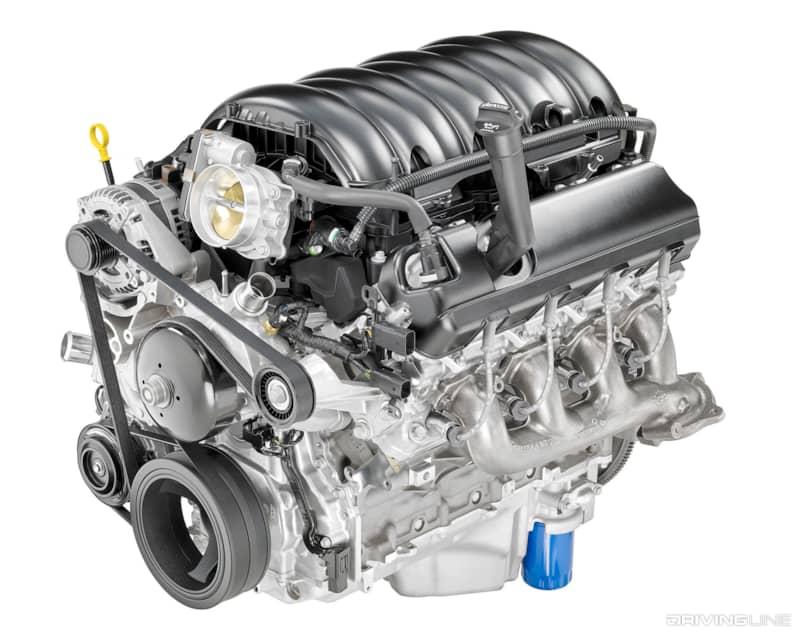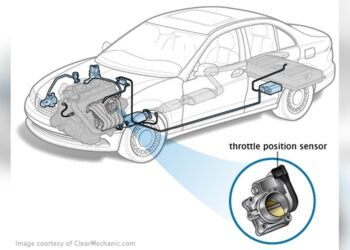When you’re looking at truck engines, the choice between the 3.0 Duramax and the 6.2 can feel overwhelming. Which one is right for you?
Both have their strengths, but they’re built for very different needs. Whether you’re prioritizing fuel efficiency, towing power, or overall performance, understanding what each engine brings to the table is key. Imagine saving money at the pump without sacrificing capability, or unleashing raw horsepower for heavy-duty tasks.
Sounds good, right? By the end of this article, you’ll know exactly which engine suits your lifestyle, so you can make a confident decision. Let’s dive in and find the perfect match for you!

Credit: www.miloschusedcars.com
Engine Specifications
When comparing the 3.0 Duramax and the 6.2 engines, understanding the engine specifications is key to making an informed decision. Whether you’re hauling heavy loads or just cruising on the highway, these details can help you pick the right fit for your needs. Let’s dive into the specifics and see how these two engines stack up.
Power And Torque
The 3.0 Duramax delivers an impressive balance of power and efficiency. It produces about 277 horsepower and 460 lb-ft of torque, making it ideal for towing and fuel-conscious drivers. You’ll find it shines in situations where torque plays a bigger role, like climbing steep hills or towing trailers.
On the other hand, the 6.2 engine takes raw power to another level. With a whopping 420 horsepower and 460 lb-ft of torque, it’s built for those who crave speed and capability. If you’re looking for a truck that can tackle high-performance tasks or give you a thrilling driving experience, the 6.2 won’t disappoint.
Displacement And Design
The 3.0 Duramax is a 3.0-liter inline-six turbo-diesel engine. Its compact design allows it to maximize efficiency and durability. Inline-six engines often excel in smoothness and balance, and the Duramax is no exception.
The 6.2 engine, however, is a 6.2-liter V8 gasoline engine. Its larger displacement means more power output, but it may come at the expense of fuel efficiency. The V8 configuration is a classic choice for those who value strong acceleration and robust performance.
Fuel System And Technology
The 3.0 Duramax uses a state-of-the-art common-rail direct fuel injection system. This setup ensures precise fuel delivery, which improves efficiency and reduces emissions. If you’re someone who drives long distances, this engine can save you money at the pump.
The 6.2 engine also employs direct injection but focuses more on power delivery. It integrates technologies like dynamic fuel management, which shuts off cylinders when not needed to improve fuel economy. That said, it’s still less fuel-efficient compared to the 3.0 Duramax due to its larger displacement.
Which matters more to you—raw power or fuel efficiency? Your answer might help you decide which engine suits your lifestyle better. Think about how you’ll use your vehicle and which features will benefit you most in the long run.

Credit: www.drivingline.com
Performance Comparison
The 3.0 Duramax diesel engine and 6.2 gas engine offer unique strengths. Both engines are popular choices for trucks. Understanding their performance differences helps buyers decide which fits their needs.
Below, we compare acceleration, towing capability, and off-road performance. These factors play key roles in choosing the right engine.
Acceleration And Speed
The 6.2-liter gas engine delivers impressive speed and quicker acceleration. It produces higher horsepower compared to the 3.0 Duramax. This results in a more responsive driving experience. Drivers seeking fast lane changes or highway cruising enjoy its performance.
The 3.0 Duramax diesel focuses more on efficiency. Its torque output ensures steady acceleration, especially under heavy loads. While it may not match the gas engine’s speed, it feels smooth and controlled during daily drives.
Towing And Hauling Capability
The 3.0 Duramax diesel excels in towing and hauling heavy loads. Its high torque at lower RPMs makes it ideal for large trailers or equipment. Diesel engines perform better under strain, making them reliable for work tasks.
The 6.2 gas engine also provides strong towing ability but falls behind in torque. For lighter loads, it still offers solid performance. Drivers who prioritize power over efficiency may prefer the gas engine for moderate tasks.
Off-road Performance
The 6.2 gas engine shines in off-road adventures with its horsepower advantage. It provides quick bursts of power for climbing steep terrains. Trail enthusiasts often appreciate its ability to tackle challenging paths with ease.
The 3.0 Duramax diesel supports off-road performance with consistent torque delivery. Its balanced approach suits rough terrains where stability is key. Diesel engines generally offer durability, making them dependable for rugged conditions.
Fuel Efficiency
The 3. 0 Duramax excels in delivering fuel efficiency, making it ideal for long drives. The 6. 2, while powerful, consumes more fuel during heavy usage. Both engines cater to different needs, balancing performance and economy.
Fuel efficiency is one of the most important factors when choosing between the 3.0 Duramax and the 6.2 engine. It’s not just about saving money at the pump—it’s also about how far you can go on a single tank of fuel. Let’s dive into the numbers and real-world performance to help you decide which engine suits your lifestyle best.Miles Per Gallon
The 3.0 Duramax diesel engine is known for its impressive fuel economy. It averages around 24–27 miles per gallon (mpg) on the highway, depending on your driving habits and vehicle configuration. Compare that to the 6.2 gas engine, which typically delivers around 17–20 mpg in similar conditions. That’s a noticeable difference, especially if you rack up highway miles often. While the 6.2 offers more horsepower, it does so at the cost of higher fuel consumption. Ask yourself: is power or fuel efficiency more valuable to you?Real-world Driving Scenarios
Numbers on paper can look great, but how do these engines perform in real-world situations? The 3.0 Duramax shines in stop-and-go traffic and long road trips. Its diesel technology is designed for consistent efficiency, even under load. The 6.2, on the other hand, guzzles more gas during city driving and when towing heavy loads. For example, if you’re hauling a boat or camper regularly, you might notice the 6.2 draining your fuel tank faster than expected. Are you someone who drives mostly in the city or ventures out on the open highway? Your answer could tip the scales here.Cost Of Fuel Over Time
Diesel fuel is often priced higher than gasoline at the pump, but don’t let that scare you off. The 3.0 Duramax’s superior mpg can offset the higher diesel cost over time. If you drive 15,000 miles annually, you might spend less on fuel with the Duramax than the 6.2. Let’s break it down: with diesel averaging $4 per gallon and gas at $3.50, you’ll still save money if you’re getting 24 mpg versus 17 mpg. Over five years, that adds up to significant savings. Plus, fewer fuel stops mean less hassle and more time on the road. — When weighing the 3.0 Duramax against the 6.2, fuel efficiency isn’t just about numbers—it’s about how those numbers fit your lifestyle. Which engine matches how and where you drive most?Maintenance And Durability
Maintenance and durability play a crucial role in engine performance. The 3.0 Duramax and the 6.2 engines have unique needs. Understanding their upkeep can help you save time and money. Below, we break down their routine maintenance, reliability, and repair costs.
Routine Maintenance Needs
The 3.0 Duramax diesel engine requires specific attention to oil changes. Diesel engines often demand high-quality oil and frequent filter replacements. Regular fuel system maintenance is also essential for optimal performance.
The 6.2 gas engine has a simpler maintenance routine. It typically requires fewer oil changes compared to diesel engines. Spark plug replacements are necessary but less frequent than diesel maintenance tasks.
Both engines benefit from routine inspections. Checking fluids, filters, and cooling systems ensures long-term efficiency. Skipping scheduled maintenance can lead to costly repairs.
Longevity And Reliability
The 3.0 Duramax is known for its durability over high mileage. Diesel engines are often built to last, even under heavy workloads. Proper care can extend its lifespan to hundreds of thousands of miles.
The 6.2 gas engine is also reliable but may not last as long. Gas engines typically wear out faster under extreme use. Regular upkeep can still help maintain steady performance for years.
Both engines have strong reputations for reliability. Durability often depends on how well they are maintained.
Repair Costs And Common Issues
Repair costs for the 3.0 Duramax can be higher due to diesel-specific parts. Common issues may include injector failures and exhaust system problems. Addressing minor issues early can prevent major expenses.
The 6.2 gas engine repairs are usually more affordable. Parts are widely available, reducing overall costs. Issues like ignition coil failures or oil leaks are relatively simple to fix.
Both engines may face wear and tear from improper maintenance. Sticking to a maintenance schedule reduces the risk of costly repairs.
Cost Analysis
When comparing the 3.0 Duramax to the 6.2 engine, cost is a major factor that can influence your decision. Beyond performance and features, understanding the financial implications of each option is key. Let’s break down the cost into three important areas: initial purchase price, long-term ownership costs, and resale value.
Initial Purchase Price
The first expense you’ll face is the price tag on the vehicle itself. Generally, trucks equipped with the 3.0 Duramax diesel engine tend to cost less than those with the 6.2 gas engine. Diesel engines, like the 3.0 Duramax, are often marketed as a more budget-friendly option in terms of upfront pricing.
But it’s not just about the engine—it’s about the trim level and features. A truck with the 6.2 engine may come in higher-end trims, which add to the cost. If you’re on a budget, the 3.0 Duramax might be the better choice, especially if you’re not chasing luxury features.
Long-term Ownership Costs
Initial price is just the beginning. Ownership costs can make or break your decision over time. Diesel engines like the 3.0 Duramax usually offer better fuel efficiency, saving you money at the pump. For instance, you might get an extra 5-10 miles per gallon compared to the 6.2 gas engine.
On the flip side, maintenance for diesel engines can be more expensive. Oil changes, filters, and repair costs for the 3.0 Duramax could outweigh the fuel savings. If you’re someone who drives long distances regularly, the Duramax might still be worth it. But for shorter commutes, the 6.2 could be more economical in the long run.
Resale Value
How much will your truck be worth when you’re ready to sell or trade it? Diesel engines often retain their value better than gas engines due to their durability and efficiency. Trucks with the 3.0 Duramax may attract buyers looking for fuel economy and towing power.
However, the 6.2 engine might hold its value better in markets where gas engines are more popular, or where buyers prefer higher horsepower. If resale value is a priority for you, research your local market. Are diesel trucks in demand where you live?
Ultimately, the cost of owning a truck with either engine comes down to how you plan to use it. Are you looking for long-term savings or a quick resale turnaround? Understanding your needs can help you make the right choice for your wallet.
Driving Experience
The driving experience is a key factor when comparing the 3.0 Duramax and 6.2 engines. Both offer unique characteristics suited for different needs. Comfort, handling, and practicality influence how enjoyable they feel on the road. Let’s explore how these engines deliver in real-world conditions.
Comfort And Noise Levels
The 3.0 Duramax diesel engine is known for its smooth operation. It produces minimal engine noise, especially at cruising speeds. This makes it great for long highway drives. The 6.2 gas engine, while powerful, tends to be louder under heavy acceleration. Its rumble appeals to performance enthusiasts but may not suit quieter preferences. Overall, the Duramax offers a more refined cabin experience.
Handling And Responsiveness
The 6.2 engine provides quicker throttle response. This makes it feel more agile during acceleration. It’s ideal for tasks requiring fast power delivery, like towing or overtaking. The 3.0 Duramax delivers power more gradually. Its low-end torque ensures steady and reliable performance. While it’s less sporty, it excels in smooth and controlled handling.
Suitability For Daily Use
The 3.0 Duramax shines in daily commutes with its fuel efficiency. Its quieter nature and better mileage suit city and highway driving. The 6.2 engine, while powerful, burns more fuel, especially in stop-and-go traffic. For users prioritizing cost-effectiveness, the Duramax is a practical choice. The 6.2 fits those who value power over efficiency in their daily routine.
Environmental Impact
The environmental impact of engines is a key consideration for many buyers. Comparing the 3.0 Duramax and the 6.2-liter engine reveals differences in emissions, fuel production, and future regulations. Each engine has strengths and weaknesses in how it affects the planet.
Carbon Emissions
The 3.0 Duramax engine emits less carbon dioxide compared to the 6.2. Its design prioritizes fuel efficiency, reducing greenhouse gases during operation. Diesel engines often produce lower CO2 emissions because of their leaner combustion process. The 6.2-liter gasoline engine, while powerful, tends to generate higher emissions. This is due to its larger displacement and higher fuel consumption.
Choosing a smaller, diesel-powered engine may benefit those aiming to lower their carbon footprint. This decision depends on driving habits and the type of trips taken regularly.
Fuel Production And Sustainability
Diesel fuel production has advantages in energy efficiency but poses challenges in sustainability. Refining diesel requires less energy than gasoline, which contributes to its lower emissions. However, diesel production can lead to higher particulate matter pollution during refinement.
Gasoline, used in the 6.2 engine, has a broader distribution network. It is easier to produce sustainably in regions adopting renewable practices. The shift toward biofuels and cleaner production methods is improving gasoline’s environmental footprint.
Future Trends And Regulations
Stricter emissions regulations are shaping the future of engine design. Governments worldwide are implementing policies to reduce carbon output. Diesel engines like the 3.0 Duramax face tougher restrictions due to concerns over nitrogen oxide emissions.
The 6.2 engine may adapt more easily to future regulations. Manufacturers are investing in hybrid and electric technologies to meet stricter standards. Both engines will likely see updates to improve sustainability and meet evolving market demands.

Credit: www.youtube.com
Frequently Asked Questions
What Is The Difference Between 3.0 Duramax And 6.2 Engines?
The 3. 0 Duramax is a diesel engine, while the 6. 2 is a gas engine.
Which Engine Is Better For Towing Heavy Loads?
The 3. 0 Duramax offers better torque and fuel efficiency for towing.
Is The 6.2 Engine More Powerful Than 3.0 Duramax?
Yes, the 6. 2 engine delivers higher horsepower than the 3. 0 Duramax.
Which Engine Has Better Fuel Efficiency?
The 3. 0 Duramax provides better fuel efficiency compared to the 6. 2 engine.
Are Maintenance Costs Higher For 3.0 Duramax Or 6.2?
Diesel engines like 3. 0 Duramax generally have higher maintenance costs than gas engines like 6. 2.
Conclusion
Choosing between the 3. 0 Duramax and 6. 2 depends on your needs. Both engines offer strong performance and unique advantages. The 3. 0 Duramax delivers excellent fuel efficiency and smooth towing capabilities. The 6. 2 provides raw power and better acceleration for heavier tasks.
Consider factors like fuel economy, towing demands, and daily driving habits. Think about long-term costs and your typical use. Each engine shines in different ways, making them suitable for specific lifestyles. Take time to evaluate what fits your priorities best.
With the right choice, you’ll enjoy a truck that meets your expectations.
















